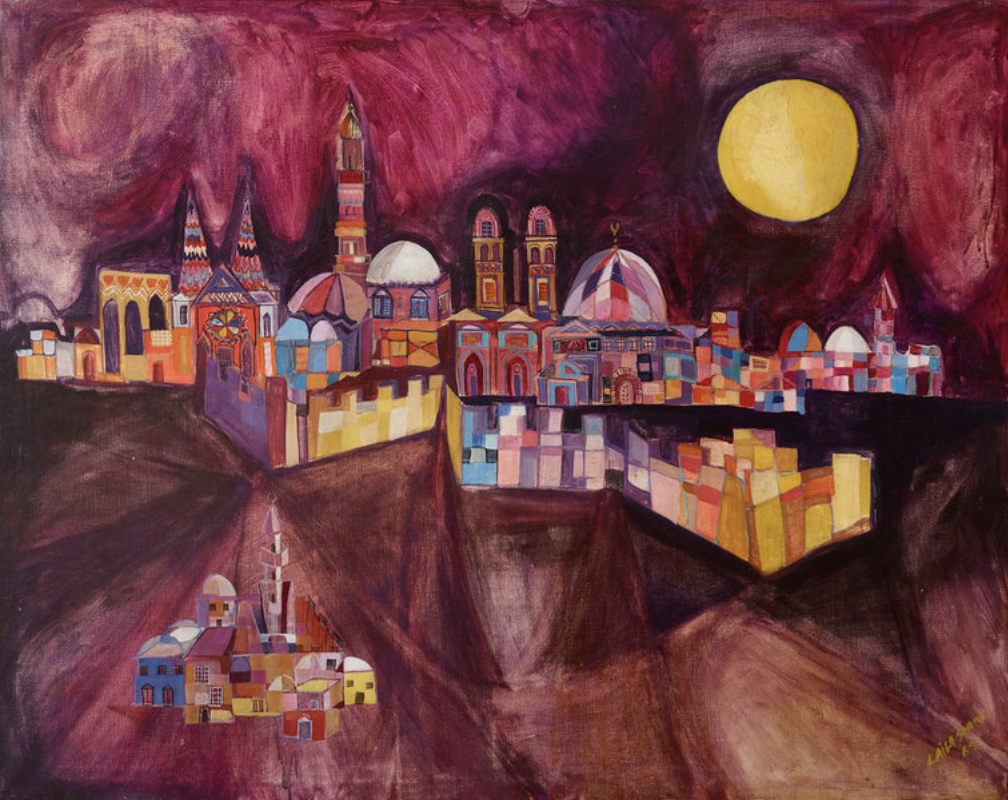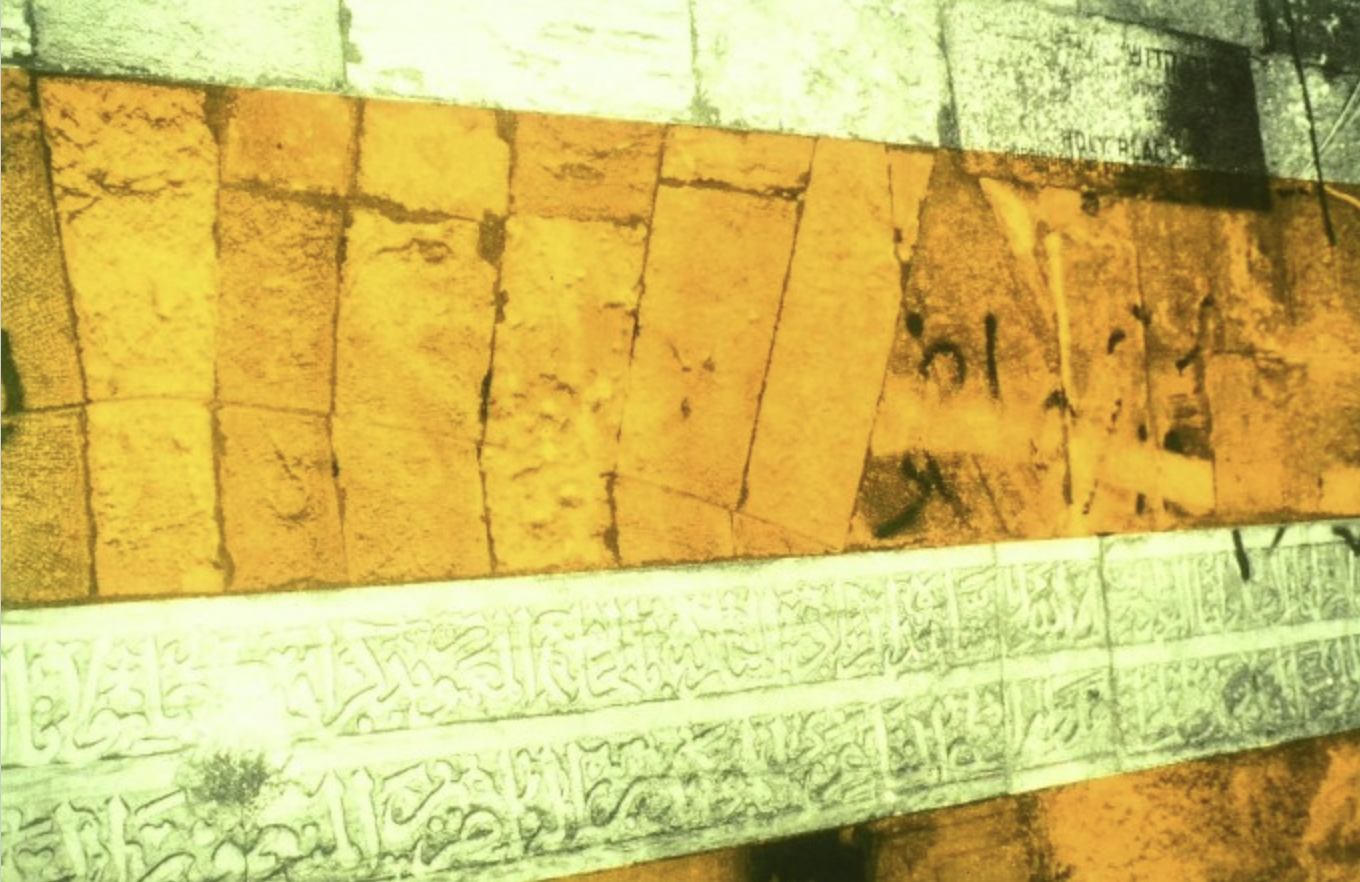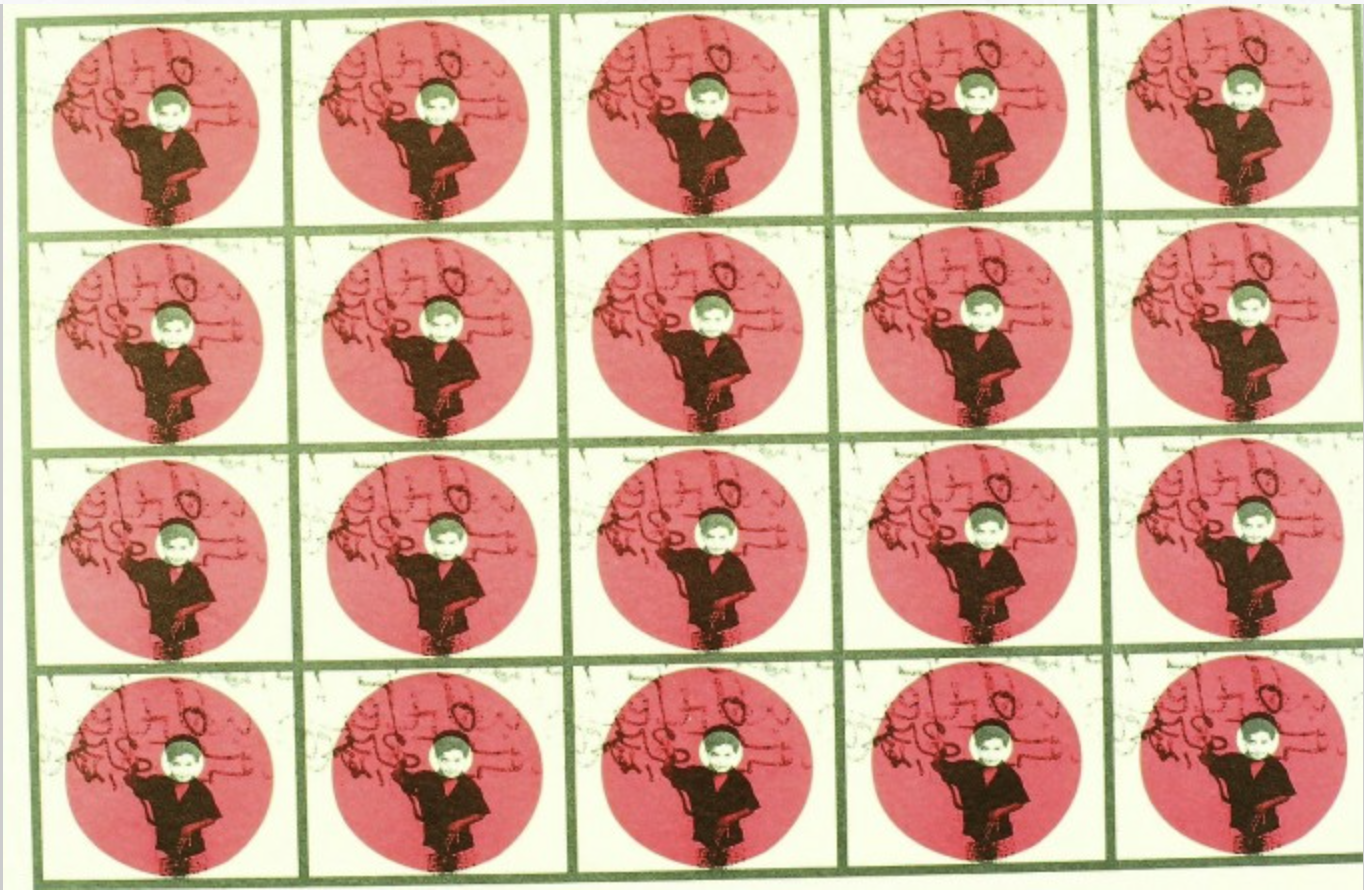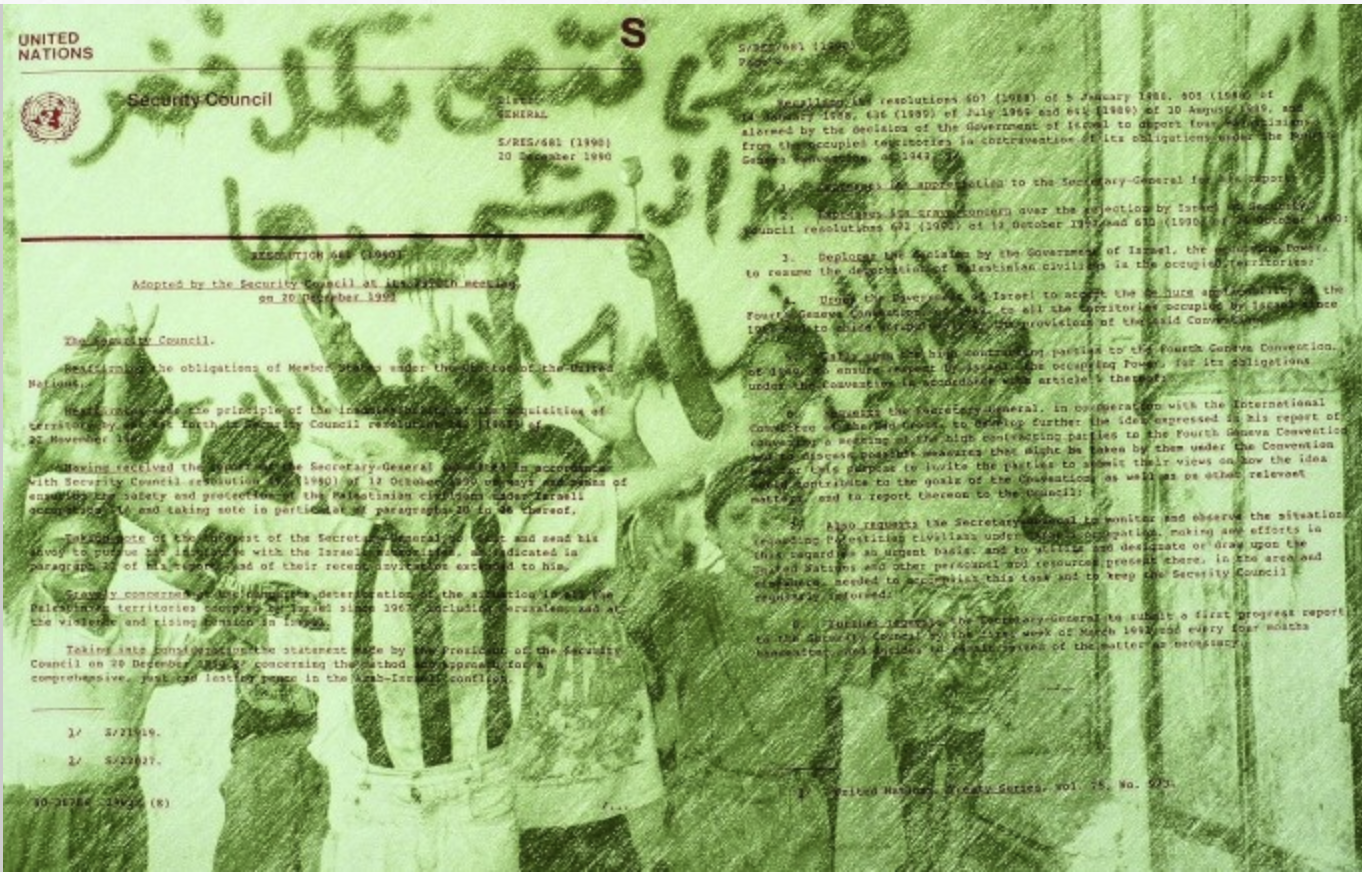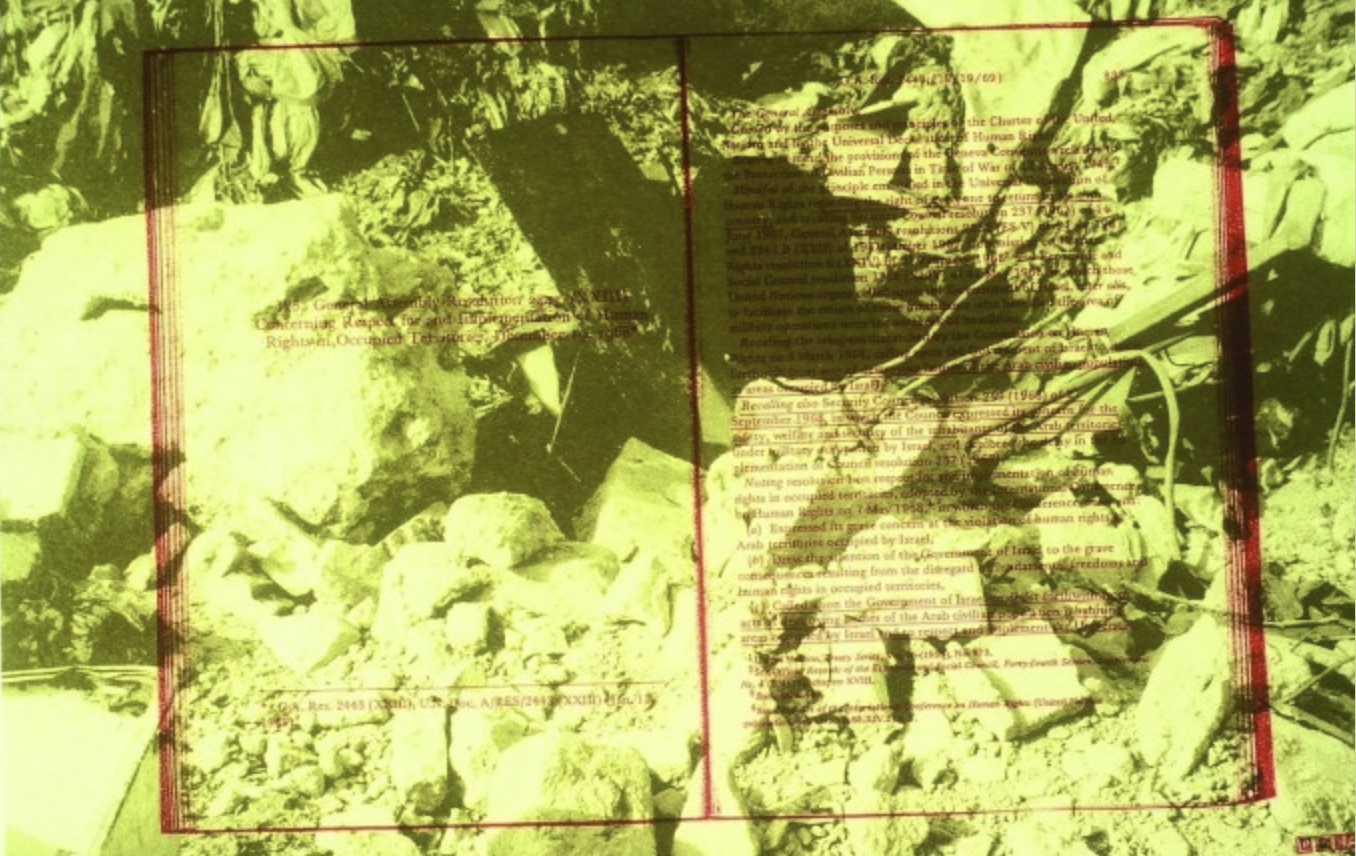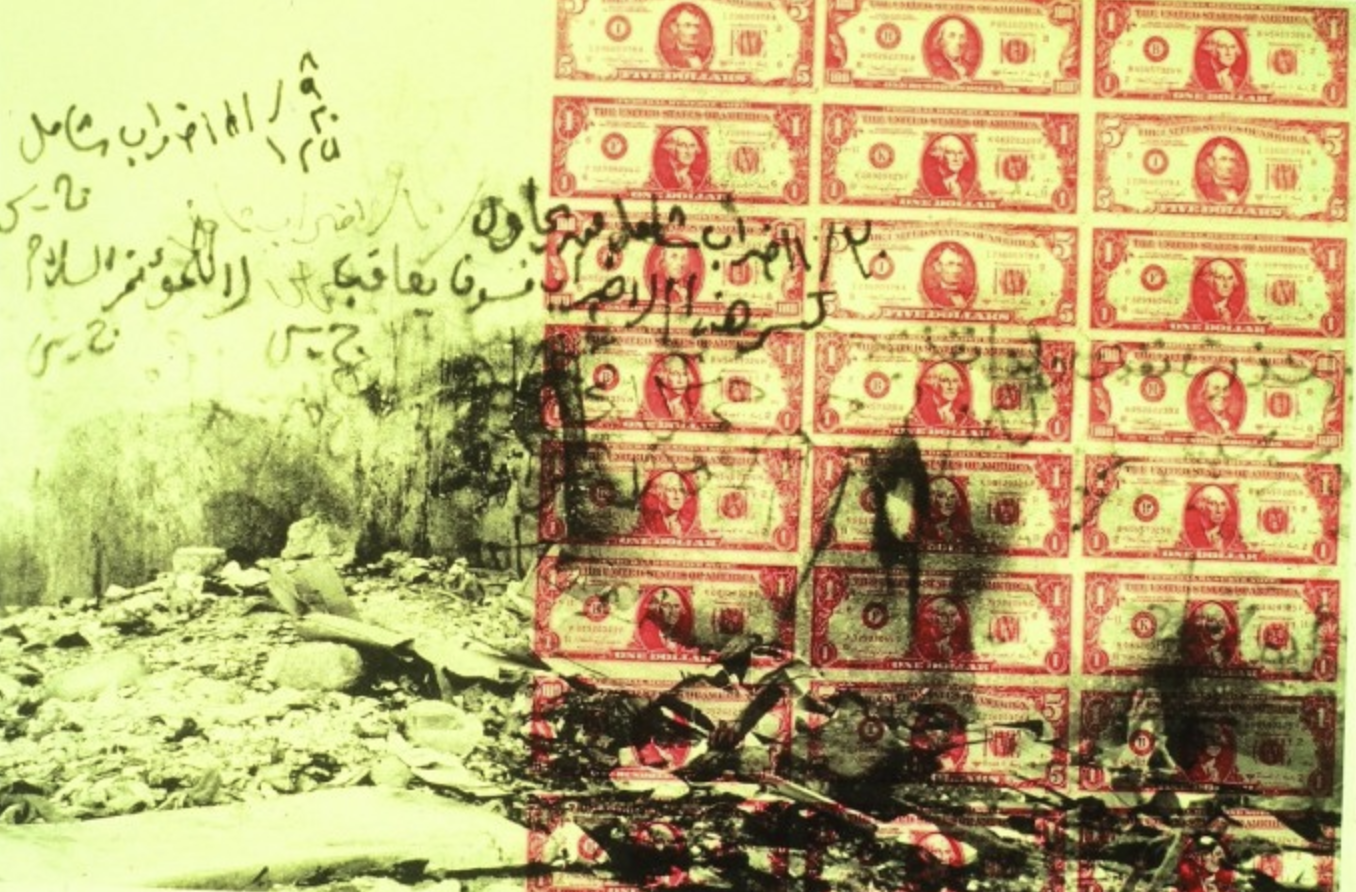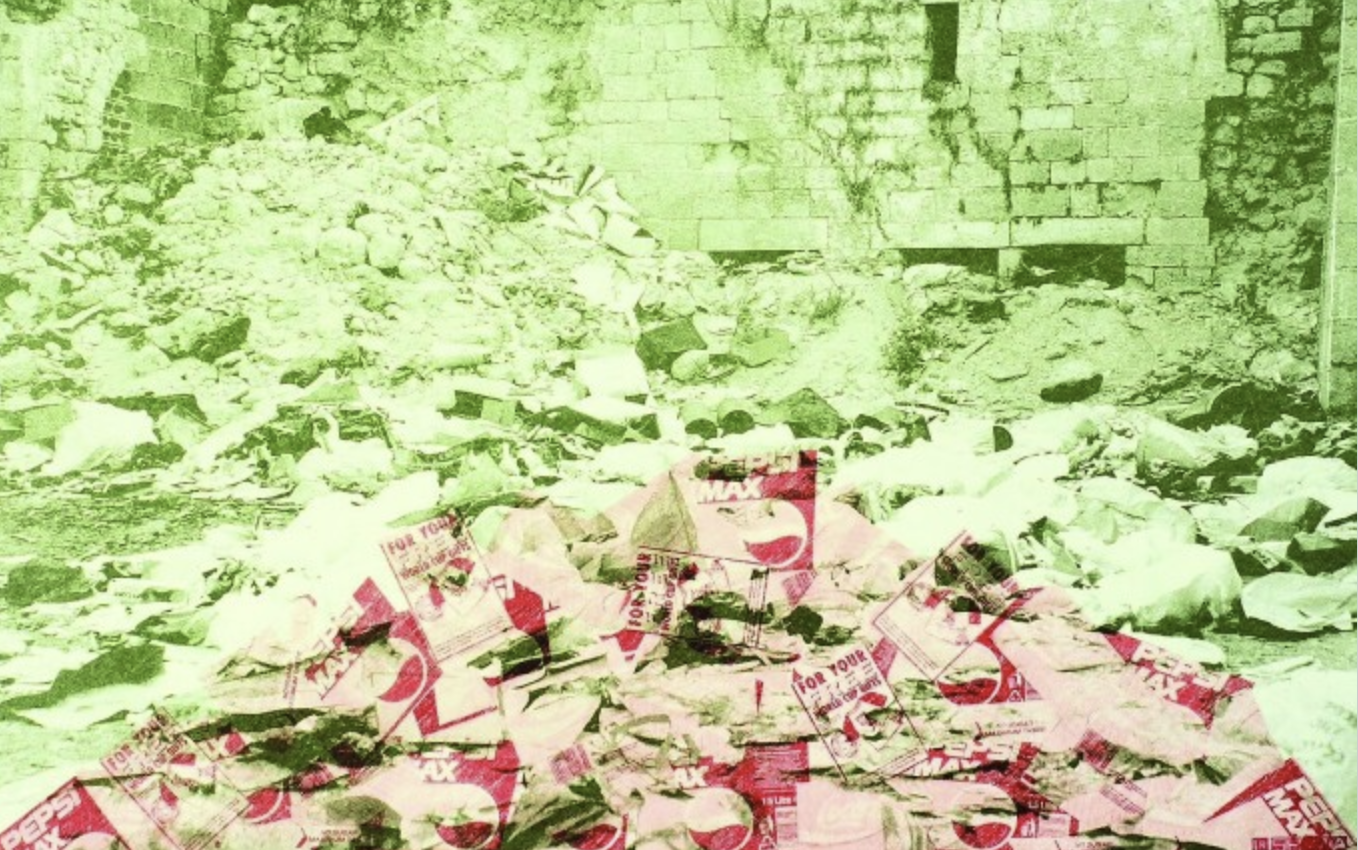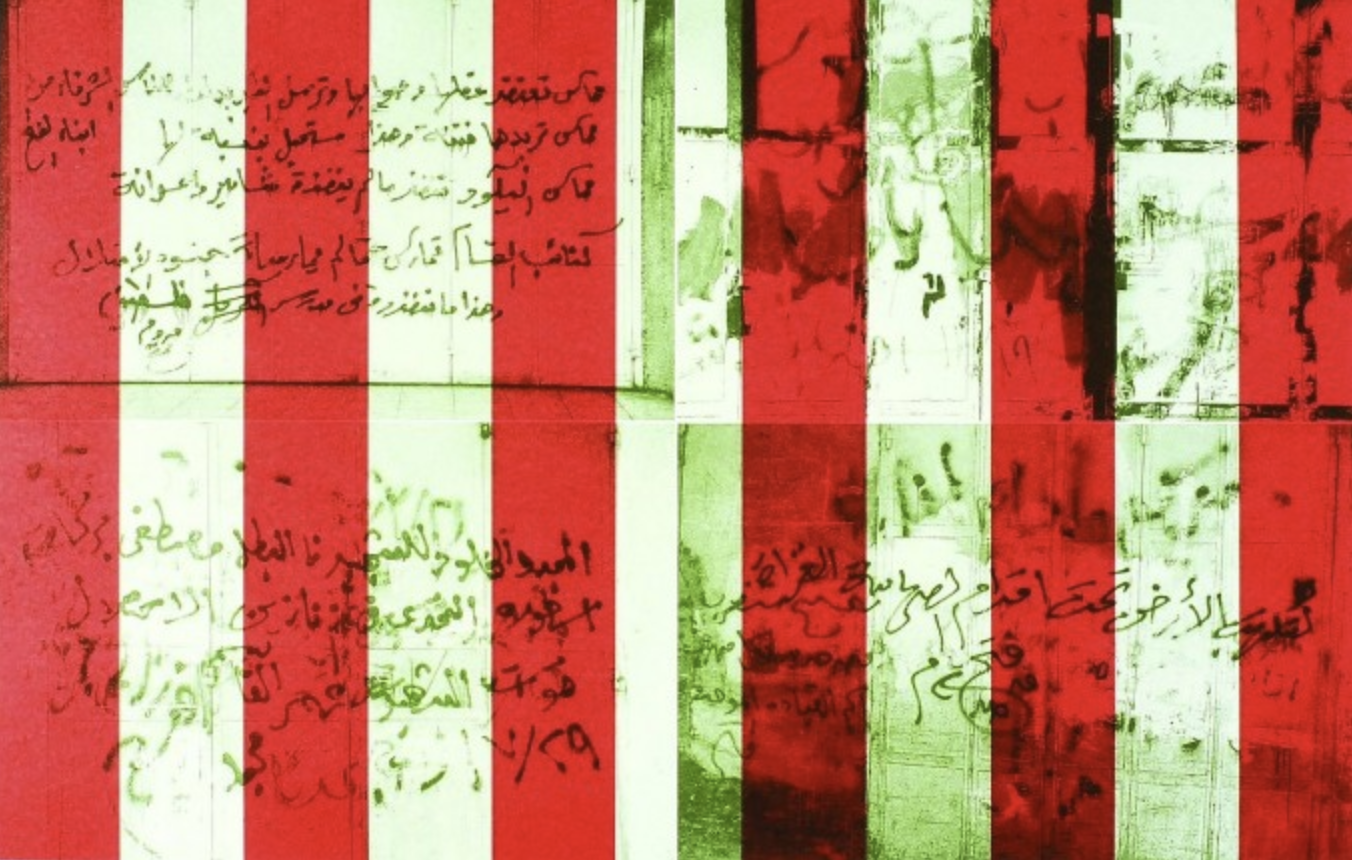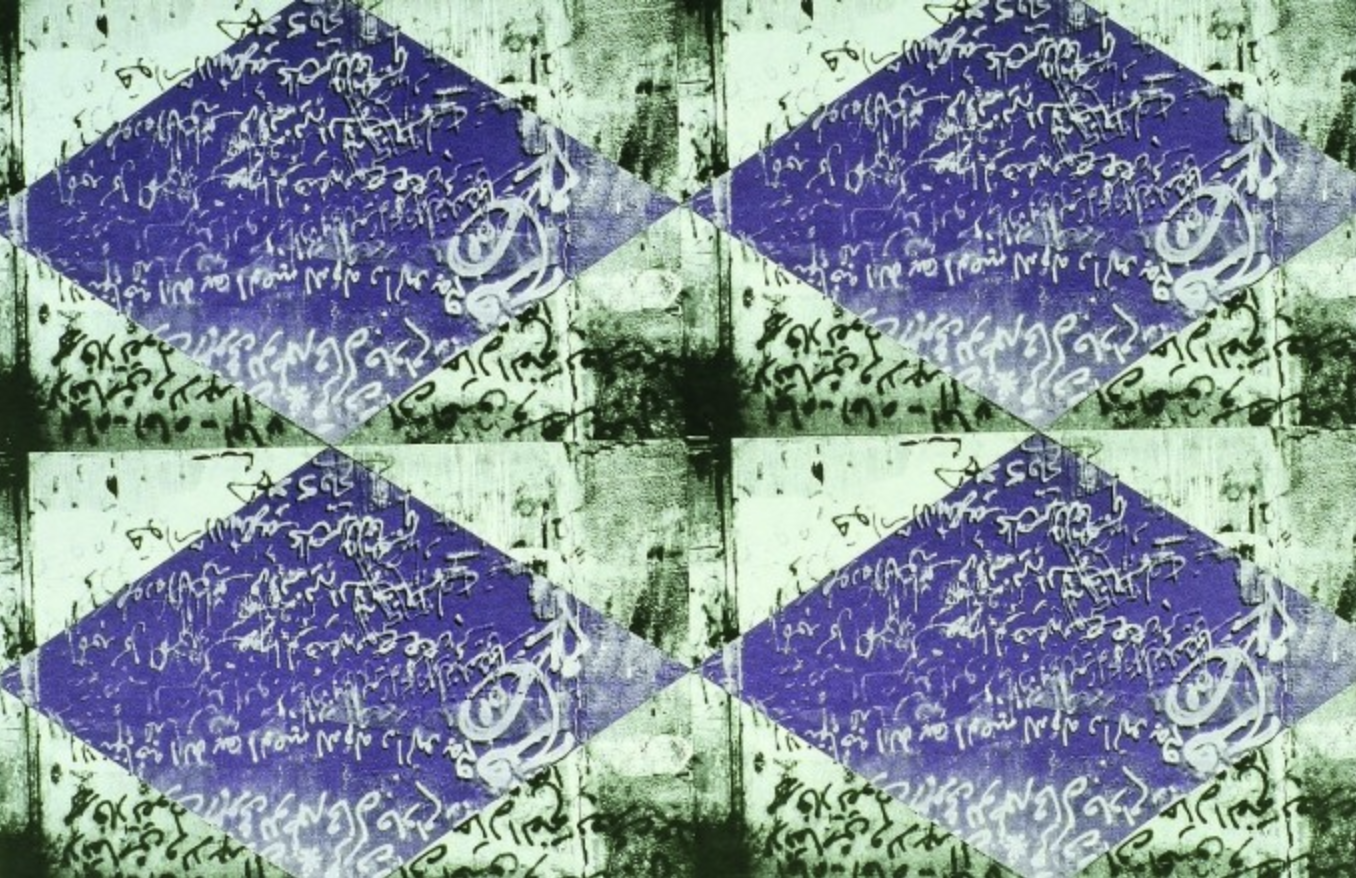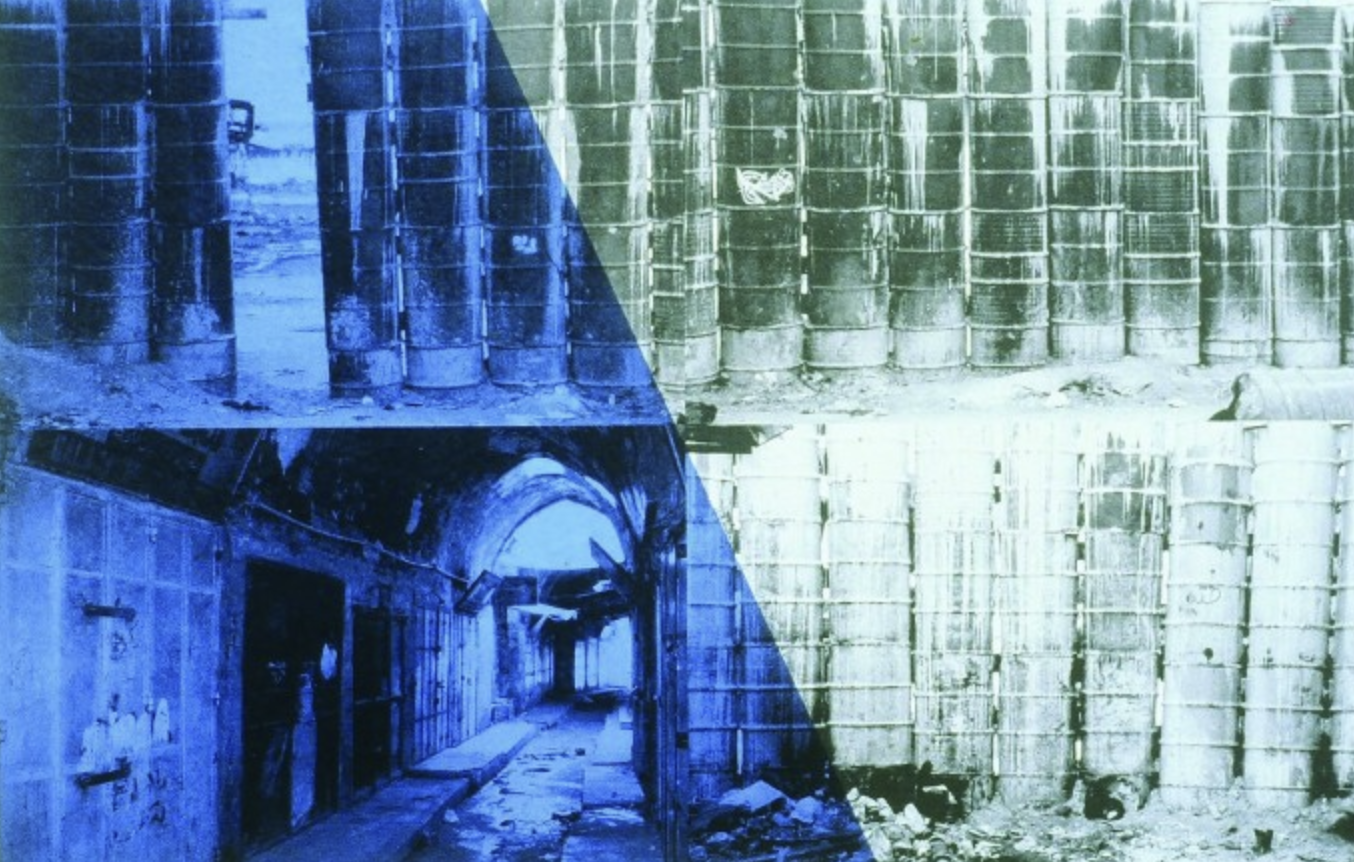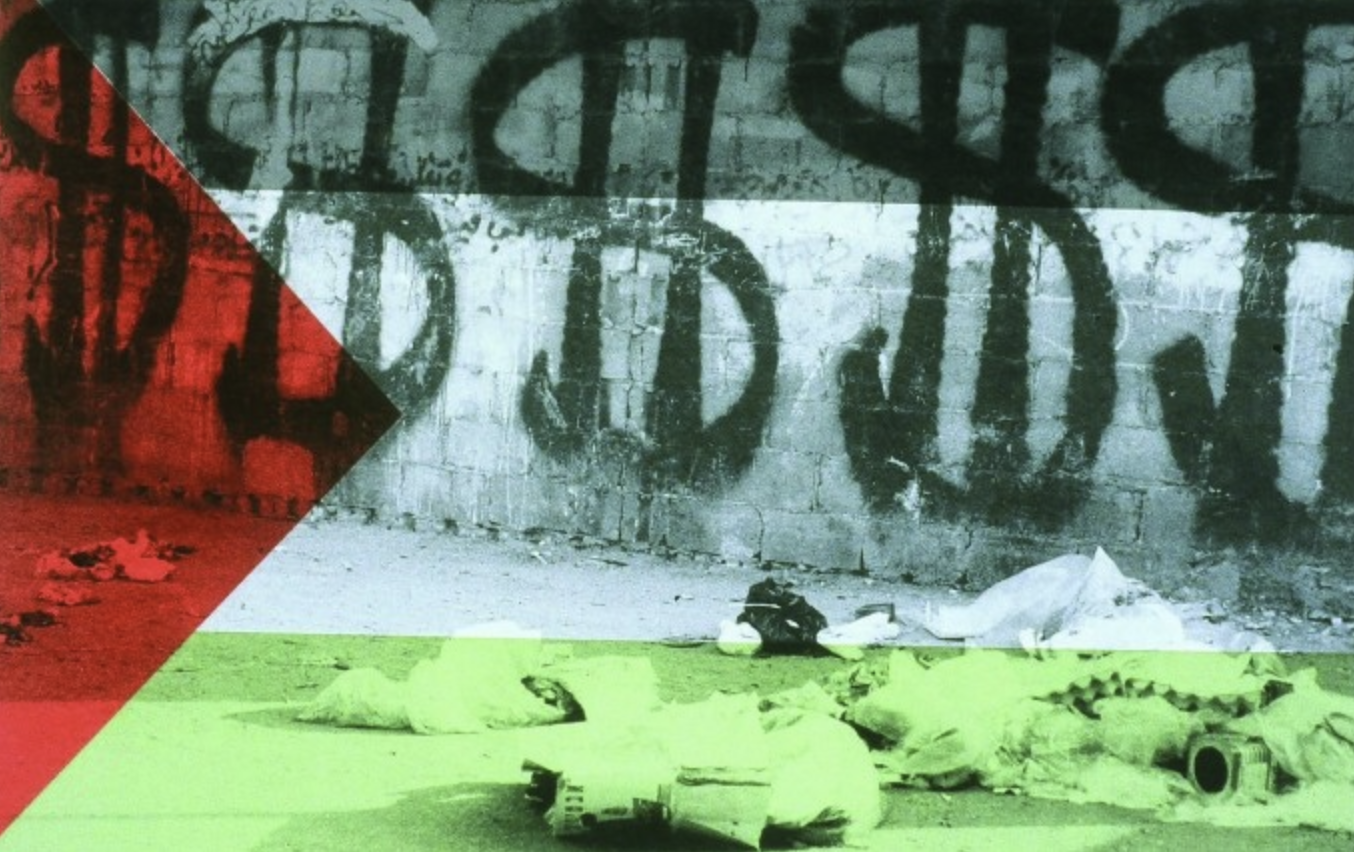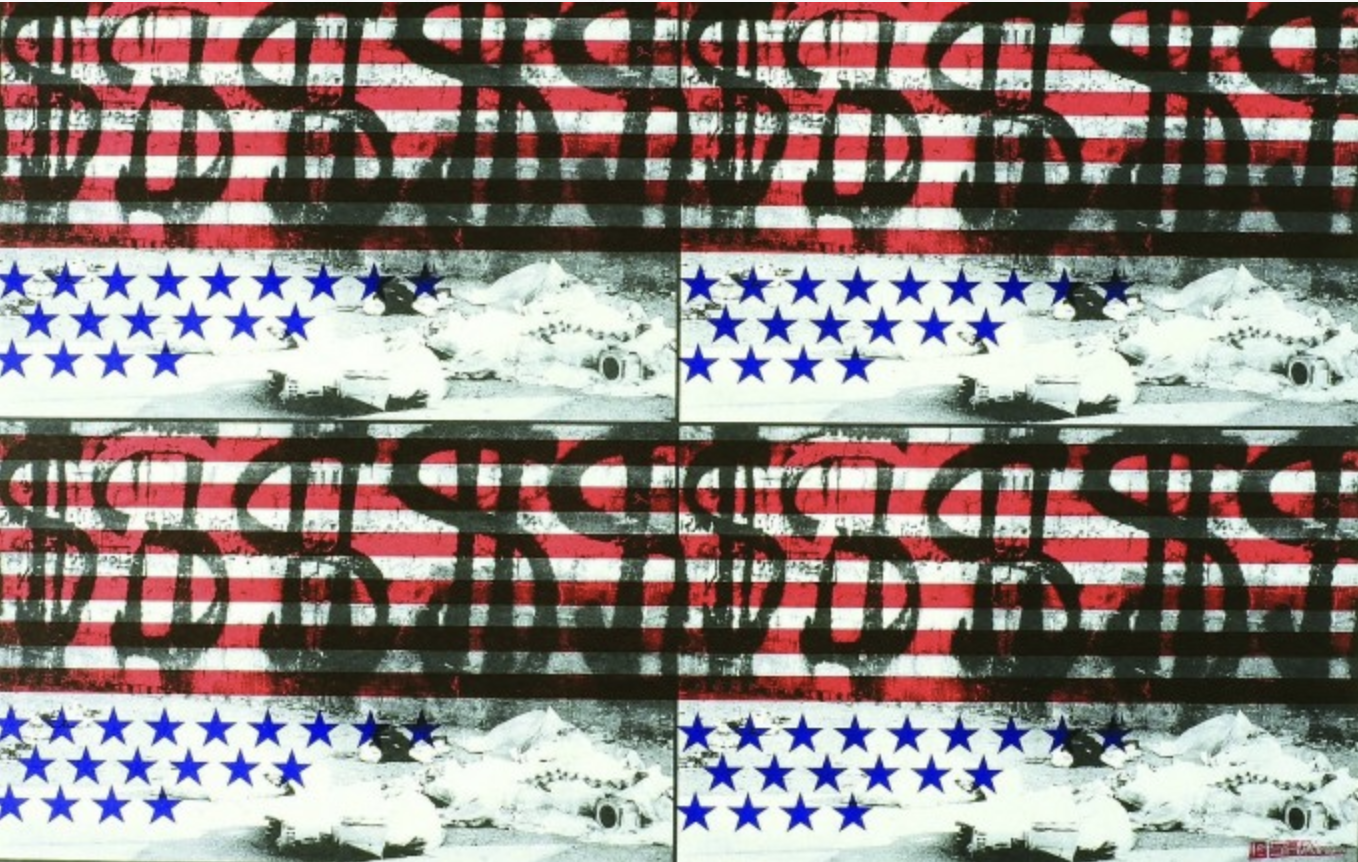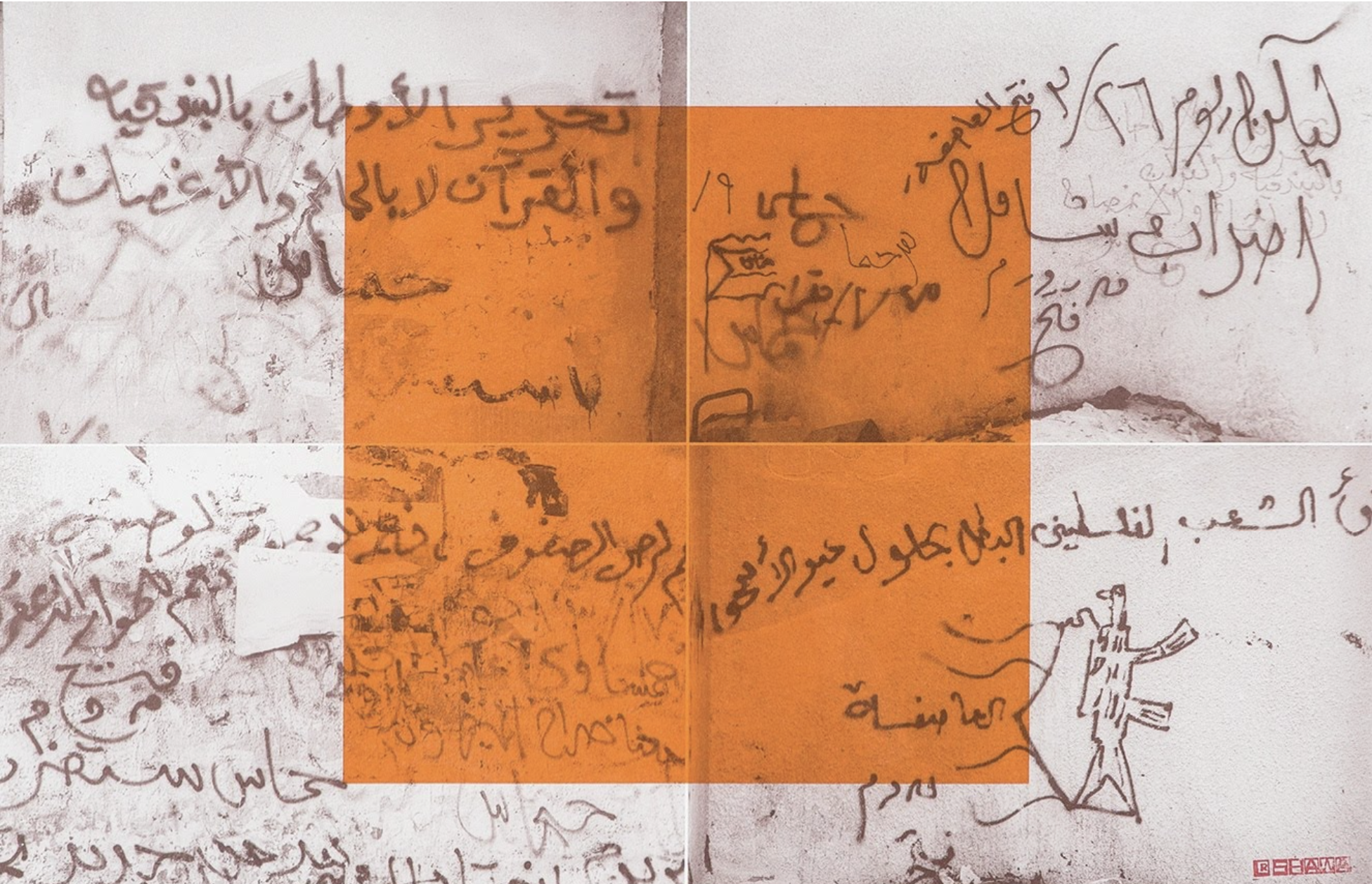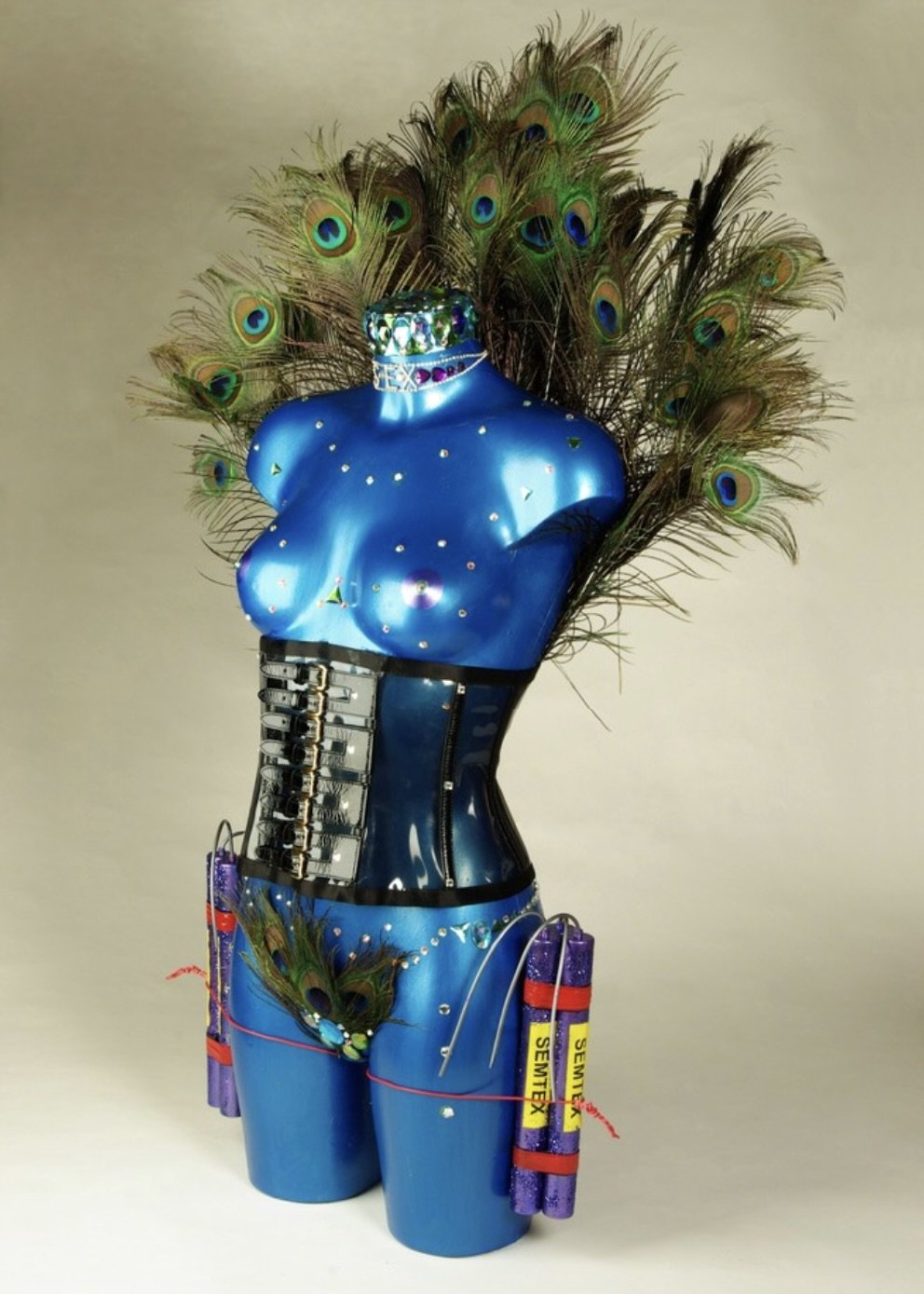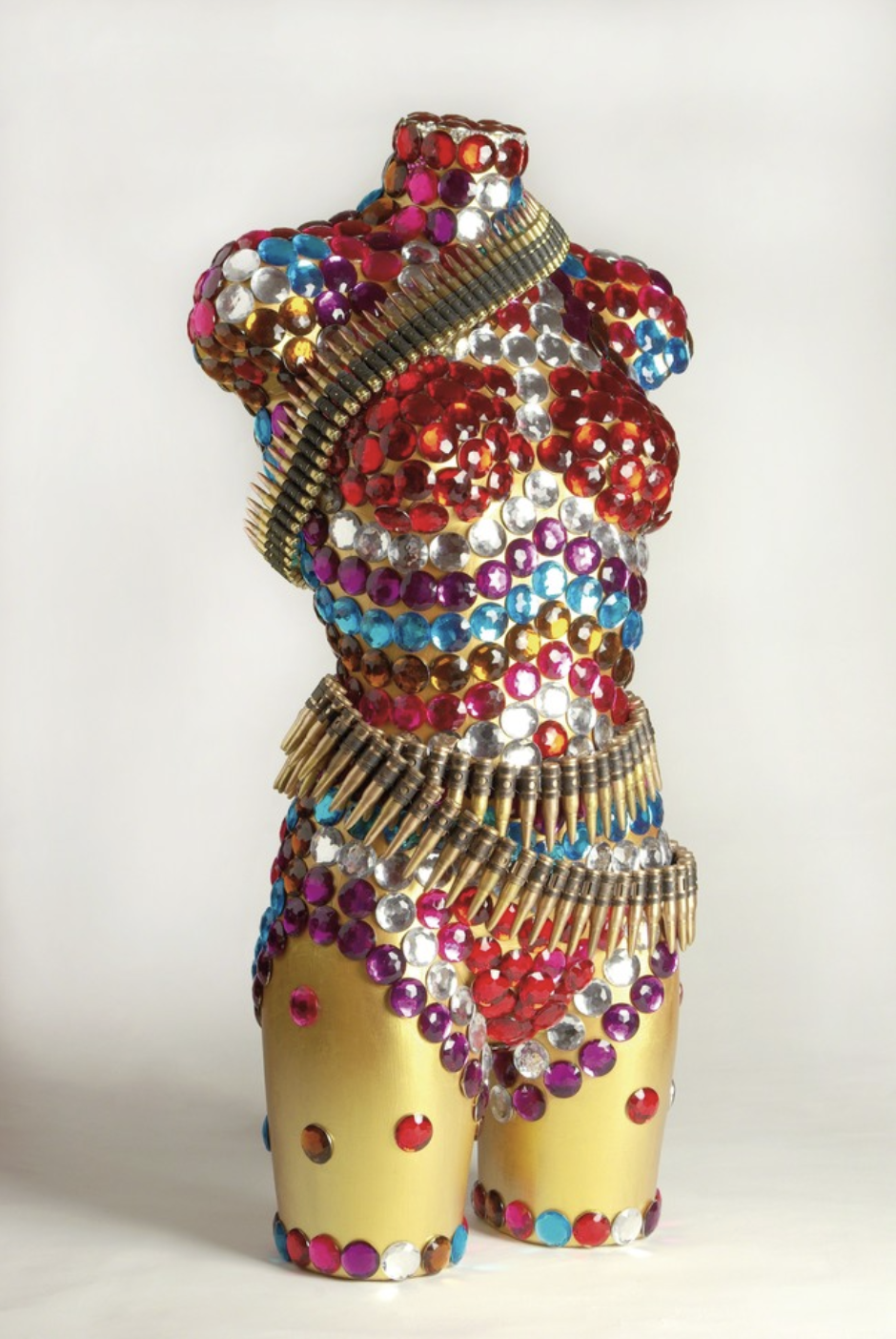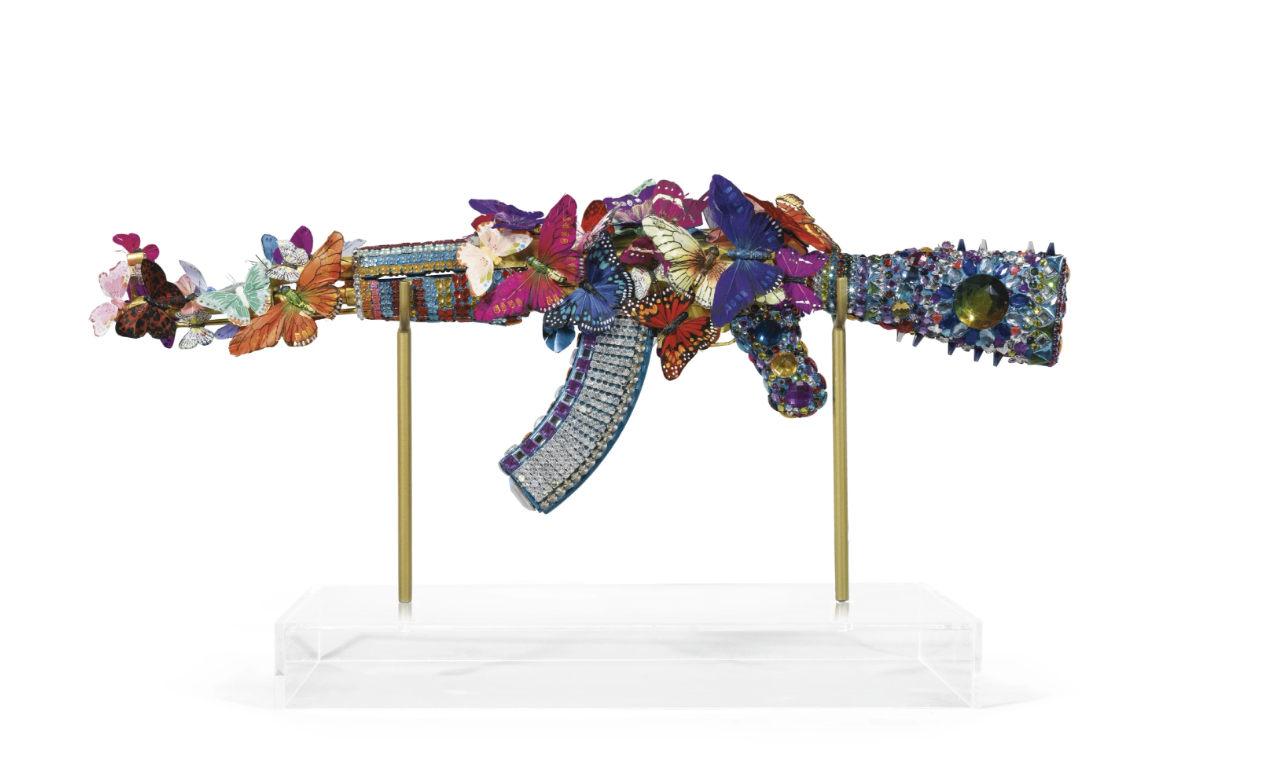LAILA SHAWA
Laila Shawa in her studio
Laila Shawa (she/her) was a revolutionary Palestinian visual pop artist. Born in Gaza, Mandatory Palestine in 1940, Shawa was only eight years old when the state of Israel was formed. She is known for her use of bright and bold colors in her work, providing direct and visually accessible commentary on her personal experience and the universal Palestinian experience.
Shawa’s artistic practice was highly interdisciplinary, encompassing painting, photography, printmaking, digital art, installations, and later in her career, sculpture. Everything she created continues to catalyze discussions surrounding political turmoil, displacement, and the universal impact of war on women and children. Shawa’s work is naturally post-modern. Her colorful, playful, and, eccentric artistic style is dubbed Islamo-pop.
Jerusalem, from the series Cities, 1968, Oil on canvas, 95 x 120 cm
Laila descended from one of the most ancient Palestinian landowning families, she hailed from a lineage of resilient and intellectually empowered women. Her father, Rashad Al-Shawa, an activist and the mayor of Gaza from 1971 to 1982, notably shaped her worldview. The revolutionary spirit she encountered from an early age resonated strongly for her entire life and career.
She received a comprehensive education, attending the Leonardo Da Vinci School of Art in Cairo and the Academy of Fine Arts in Rome. Following her studies, Shawa returned to her homeland to oversee arts and crafts education in refugee camps.
Drowning Cactus, 2014, Acrylic on canvas, 122 x 122 x 3.7 cm
Supported by her father and ex-husband, Laila established a cultural center in Gaza in 1988, a labor of love spanning 12 years. The center, named after her father, aimed to bridge Gaza with the global cultural landscape through exhibitions and annual festivals. Housing a theater and library, the center fell victim to the tumultuous events in Gaza; first, it was confiscated by Arafat upon his arrival and later bombed by the Israelis.
Screams, 2011, Mixed media and photography on canvas, 100 x 250.5 cm
Shawa holds the distinction of being the first Palestinian artist to infuse photography with the bold aesthetic of pop art. While her initial photography training occurred during her studies in the early 1960s, she set aside the medium while seemingly focusing on her paintings. However, during the tumultuous period of the First Intifada, when graffiti emerged clandestinely on Gaza's walls amidst a media blackout, she felt compelled to wield the camera once more. "I aimed to capture the raw political essence of these walls, their immediacy, and the cohesive discourse they embodied," she reflected in an interview.
Walls of Gaza (1 through 12 of 12), Lithograph on paper, 1994, 60 X 44 cm
Walls of Gaza (spanning the late 1980s and into the mid-1990s) continues to be one of Shawa’s most well-known series. Born from one of Palestine's first uprisings, where the people of Gaza were disconnected from media and the outside world, the usage of graffiti on walls and rubble became the main source of communication between each other. The series stems from her use of photography as documentation. She then merged the images with geometric shapes, colors, and other images to create a body of work that references pop art while exposing the harsh realities of the Israeli occupation of Palestine.
The Impossible Dream, Acrylic on Board, 1988
Her series titled Women and the Veil featured cartoonish paintings of women wearing colorful niqabs. The nature of Shawa’s work is highly political and directly connected to the politics of Middle Eastern women. In one painting The Impossible Dream we see ten women wearing vibrantly designed niqabs while holding melting ice cream cones. Their eyes are closed and their mouths are covered leaving the ice cream untouched. This body of work was shown in 1990 at the Jordan National Gallery, Amman.
(Left) Disposable Bodies 5, (Paradise Now), Plastic, rhinestones, Swarovski crystals, Peacock feathers and wire, height 88 cm, 2012
(Right) Disposable Bodies 4, Mannequin, mixed media and ammunition, 88 × 40 × 22 cm, 2012
Later in her career, the use of sculpture became a prominent aspect of her artmaking. In her series, Disposable Bodies, she used the torsos of curvy, female mannequins and adorned them with rhinestones, paint, feathers, and draped them with bullet belts. This work examines the motivation of a female suicide bomber and the ongoing conversation surrounding male dominance over the female body.
Furthering this practice of adorning objects, in 2012 Shawa was commissioned to participate in a group show put on by AKA Peace – an anti-arms exhibition where artists were given decommissioned AK-47s and asked to “transform them”. Laila’s approach was to stay as far away from glorification as possible but instead turn them into feminine adorned objects while simultaneously emasculating the nature of the object. The title of the work, Where the Soul Dwells, references the mythology belief that butterflies are the souls of lives lost, returning to where they passed. Shawa's use of taxidermy butterflies is a direct reflection of this concept within this work.
Laila Shawa emerges as a revolutionary Palestinian visual artist, transcending boundaries with her vibrant and eclectic creations. Born into a family of historical significance, she drew inspiration from her father's activism and her rich Palestinian heritage. Her artistic journey, spanning various mediums, reflects a profound commitment to addressing political turmoil, displacement, and the impact of conflict on women and children. From her pioneering work in infusing photography with pop art aesthetics to the iconic Walls of Gaza series capturing the raw essence of the First Intifada, Shawa consistently utilized her art as a powerful medium of expression and documentation.
Zar III, 1992, Acrylic on canvas, 121.5 x 134 cm
The Women and the Veil series, along with later explorations in sculpture such as Disposable Bodies, delves into the complex narratives of Middle Eastern women, challenging societal norms and power dynamics. Throughout her career, Laila Shawa's Islamo-pop style and unwavering dedication to her craft have left an indelible mark, fostering dialogue and awareness of the pressing issues faced by her homeland of Gaza and women in the Middle East.
Children of Peace, Children of War, 2013, Mixed media and photography on canvas, 183.5 x 210.5 cm
BIBLIOGRAPHY
"Laila Shawa." Barjeel Art Foundation. February 11, 2024. https://www.barjeelartfoundation.org/artist/palestine/laila-shawa/.
Wikipedia. 2023. "Laila Shawa." Wikimedia Foundation. Last modified November 19, 2023. https://en.wikipedia.org/wiki/Laila_Shawa.
"Laila Shawa: Biography." Artnet. February 11, 2024. https://www.artnet.com/artists/laila-shawa/biography
"Palestinian Artists You Need to Know About." Widewalls. October 30, 2023. https://www.widewalls.ch/magazine/palestinian-artists
Morelli, Naima. "The Life and Work of Palestinian Islamo-Pop Artist Laila Shawa." Middle East Monitor. April 2, 2019. https://www.middleeastmonitor.com/20190402-the-life-and-work-of-palestinian-islamo-pop-artist-laila-shawa/
Basciano, Oliver. "Laila Shawa Obituary." The Guardian. November 24, 2022. https://www.theguardian.com/artanddesign/2022/nov/24/laila-shawa-obituary
"Laila Shawa." Artsy. https://www.artsy.net/artist/laila-shawa
“Laila Shawa.” October Gallery. https://octobergallery.co.uk/artists/shawa#
“Laila Shawa.” The Recessionists. http://www.therecessionists.co.uk/middle-eastern/laila-shawa
"Laila Shawa — A Prolific and Revolutionary Artist from Palestine." Medium. April 8, 2020. https://shemakesarttoo.medium.com/laila-shawa-a-prolific-and-revolutionary-artist-from-palestine-56fd6727203c
“Laila Shawa.” The Collection. https://dafbeirut.org/en/laila-shawa


